Are you ready to learn all about screen printing inks? Great! You’re in the right place. In this guide, we’re going to talk about the different types of inks you can use for screen printing. We’ll look at everything from the usual ones like plastisol to newer types like UV-curable inks. Whether you’re just starting out or you’ve been printing for a while, knowing about these inks will help you make your projects look even better.
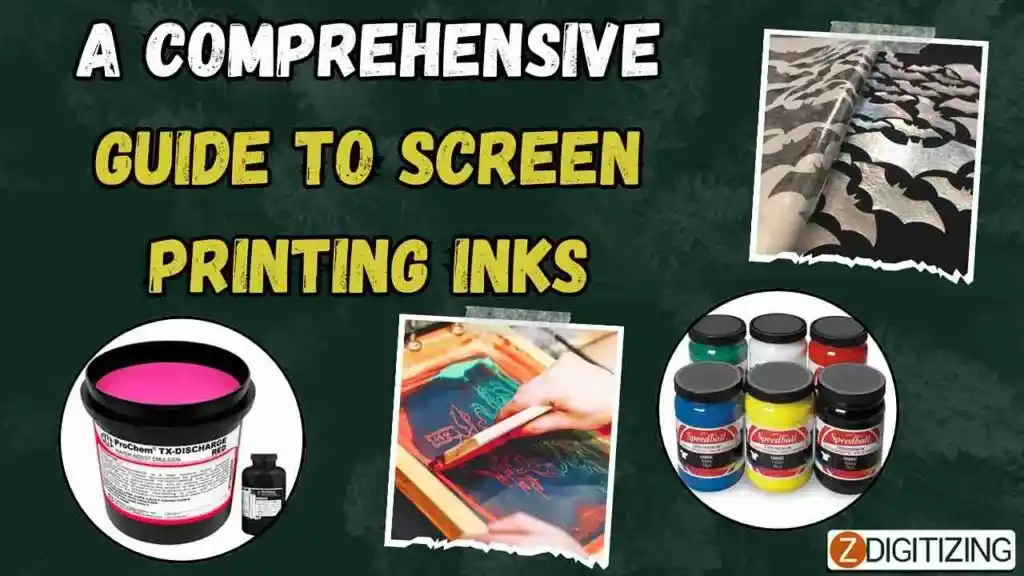
Let’s start exploring these inks together and see how each one works!
A Comprehensive Guide to Screen Printing Inks
What is Screen Printing Ink?
It is a specialized type of ink used in the screen printing process, characterized by its viscosity and ability to create durable, vibrant prints on various substrates, including fabric, paper, and plastic.
It is typically applied through a stencil on a mesh screen, where areas not intended for printing are blocked to allow ink to pass only through the desired design.
Embroidery Digitizing & Vector Art Services
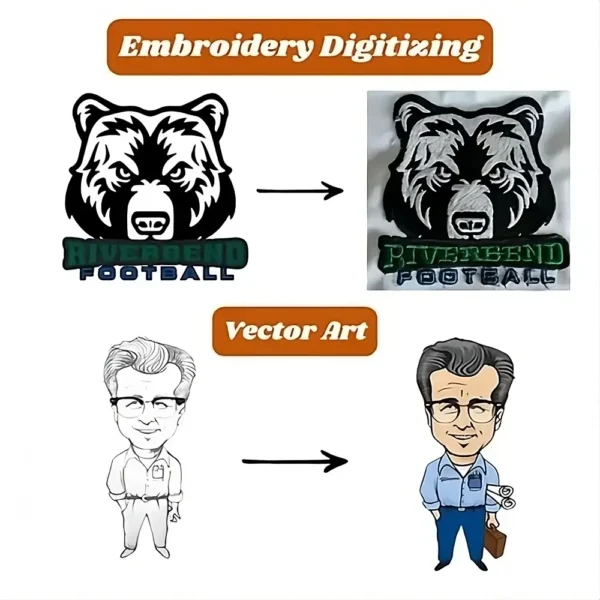
Looking for embroidery digitizing and vector art services that are affordable and reliable? We offer fast turnaround time, guaranteed quality, and the option to preview your design before payment, we make sure you get exactly what you need. Your satisfaction is our top priority, and we’re dedicated to delivering the best results. Don’t wait—try ZDigitizing today and see the difference in quality and service!
Embroidery Digitizing & Vector Art Services
Looking for embroidery digitizing and vector art services that are affordable and reliable? We offer fast turnaround time, guaranteed quality, and the option to preview your design before payment, we make sure you get exactly what you need. Your satisfaction is our top priority, and we’re dedicated to delivering the best results. Don’t wait—try ZDigitizing today and see the difference in quality and service!
Types of Screen Silk Printing Inks
These can be categorized into several types, each with unique properties and applications. Here are the main types of printing inks:
- Plastisol Inks
- Water-Based Inks
- Discharge Inks
- Solvent-Based Inks
- UV-Curable Inks
Now, let’s see the details of these ink screen printing types:
1. Plastisol Inks
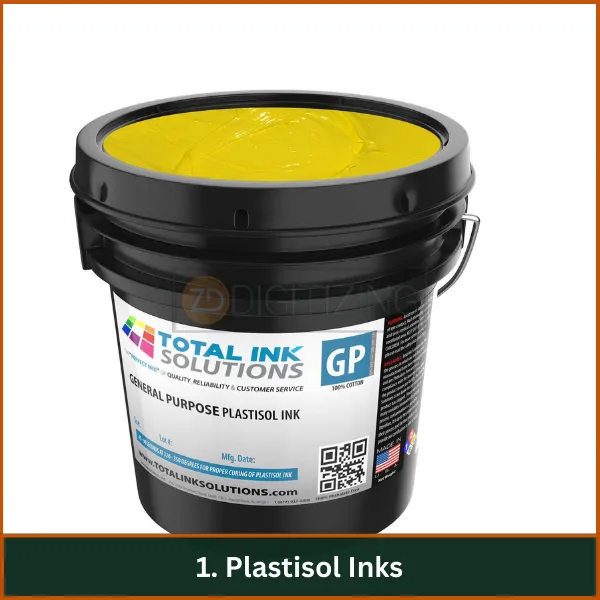
Plastisol inks are a popular choice for best screen printing ink due to their versatility and durability. They are composed of PVC particles suspended in a plasticizer, which makes them easy to manage and apply. They do not dry until cured, which allows for a longer working time.
Benefits and Limitations
Benefits |
|
Limitations |
|
2. Water-Based Inks
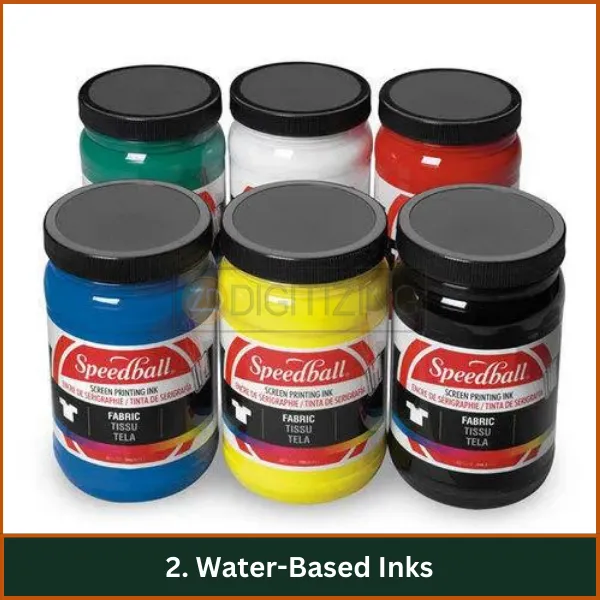
Water-based inks consist of pigments dissolved in water, making them much softer and lighter on fabrics. They absorb into the fabric, creating a dye-like finish with a soft hand feel. They are often favored for their eco-friendly properties and as an option for ink screen silk printing.
Benefits and Limitations
Benefits |
|
Limitations |
|
3. Discharge Inks
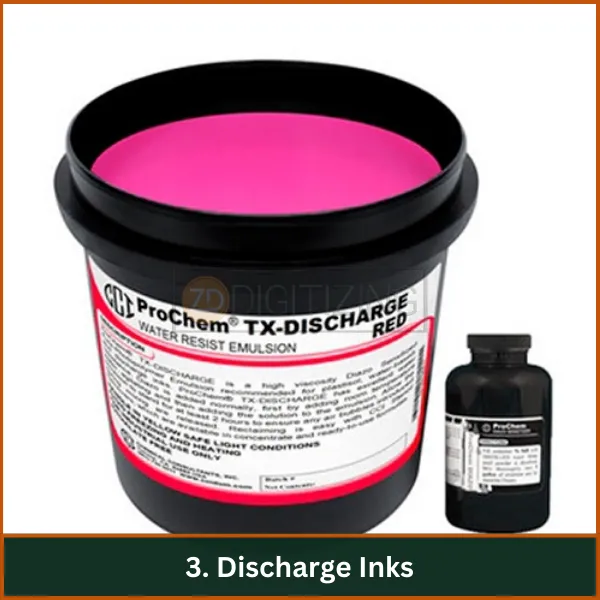
Discharge inks remove the fabric’s dye instead of adding color on top, which results in vibrant prints on dark garments. These inks are used to print lighter colors on dark backgrounds without the need for an underbase, making them a great choice for best screen printing ink.
Benefits and Limitations
Benefits |
|
Limitations |
|
4. Solvent-Based Inks
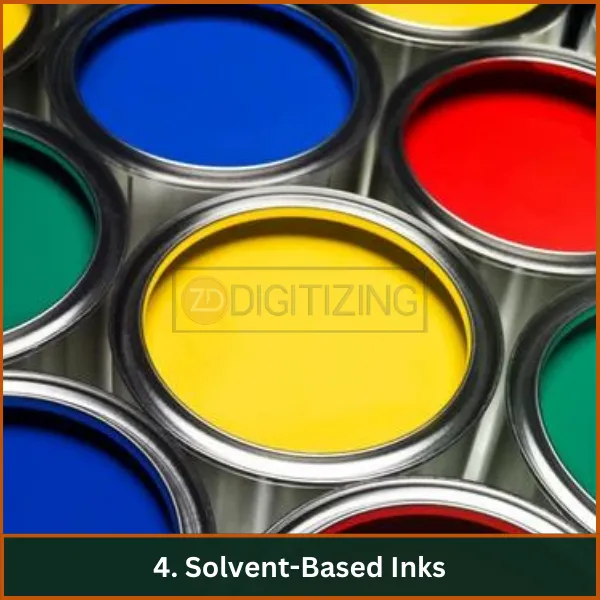
Solvent-based inks are known for their ability to adhere to a variety of non-porous surfaces including plastics, metals, and glass. These inks dry quickly as the solvents evaporate, leaving the pigment behind and are often considered for fabric screen printing ink.
Benefits and Limitations
Benefits |
|
Limitations |
|
5. UV-Curable Inks
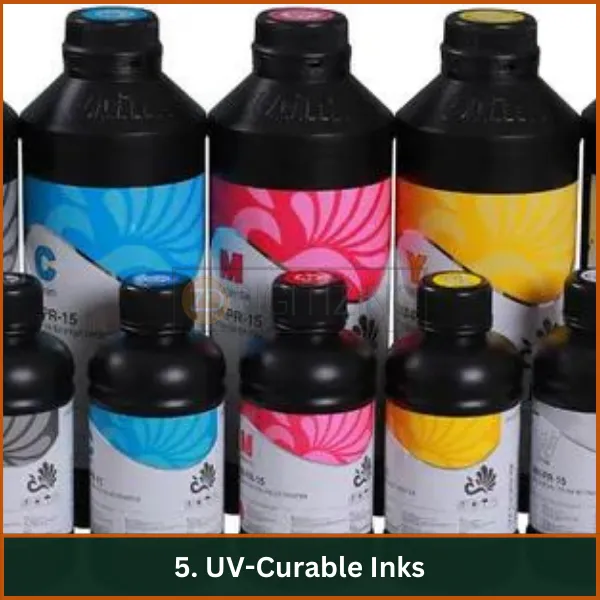
UV-curable inks dry instantly when exposed to UV light, making them ideal for high-production settings. These inks are typically used on both flexible and rigid substrates and are known for their durability and resistance to fading, aligning them with the best silk screen printing ink.
Benefits and Limitations
Benefits |
|
Limitations |
|
Understanding Ink Classification Methods for Screen Printing
When we talk about screen printing, knowing about different kinds of inks and how they are grouped (classified) is very important. This helps you pick the right ink for your printing job, ensuring the best results on whatever material you’re working with.
Here are the primary classification methods:
Classification by Characteristics
- Fluorescent Ink: Bright and vibrant, often used for special effects.
- Magnetic Ink: Contains magnetic particles for security applications.
- Conductive Ink: Used in electronic applications for creating circuits.
- Fragrant Ink: Infused with scents for promotional materials.
- Sublimation Ink: Used for dye-sublimation printing processes.
- Transfer Ink: Designed for transferring images onto surfaces.
Classification by Drying Method
- Ultraviolet (UV) Drying Ink: Cures when exposed to UV light.
- Quick-Setting Ink: Dries rapidly upon application.
- Self-Drying Ink: Air dries without additional heat.
- Low-Temperature Heat-Setting Ink: Cures at lower temperatures, suitable for heat-sensitive substrates.
- High-Temperature Ink: Requires higher temperatures for curing.
Classification by Ink State
- Colloidal Inks: Includes water-based and oil-based inks.
- Solid Inks: Such as electrostatic screen printing toner.
Classification by Substrate
- Paper Inks: Tailored for printing on paper, including oil-based and water-based options.
- Plastic Inks: Designed for use on various plastic substrates, categorized as soft or hard plastic inks.
Classification by Composition
- Water-Based Inks: Use water as a solvent, eco-friendly option.
- Oil-Based Inks: Utilize oil as a base, known for their durability and vivid colors.
Properties of Screen Printing Inks
When choosing inks for printing, it’s crucial to consider their properties to ensure they meet your project’s requirements. Here’s a look at the key properties that affect how inks perform on different materials.
- Opacity and Transparency: This determines how much the ink covers the underlying fabric. Inks with high opacity can cover dark fabrics effectively, whereas transparent inks are better suited for creating layers or special effects.
- Viscosity and Texture: The thickness of the ink affects how it flows through the screen. Thicker inks are ideal for creating textured effects, while thinner inks are better for detailed work.
- Curing and Drying Times: Different inks have different curing requirements, which can impact production speed. Some inks dry quickly, making them suitable for fast-paced production environments, while others might need longer or specific conditions to set properly.
- Durability and Washability: The resilience of the ink to washing and wear and tear is vital for items like apparel that require frequent laundering. Some inks form a more durable bond with the fabric, making them last longer even after multiple washes.
- Adhesion: This refers to how well the ink sticks to various substrates. Some inks are formulated to adhere better to smooth surfaces like plastics, while others are optimized for porous materials like cotton.
- Color Vibrancy: The brightness and intensity of the color after drying are important for visual impact. Some inks retain their vibrancy better over time and under different lighting conditions.
- Flexibility: For materials that stretch, like some textiles, the flexibility of the ink is crucial to prevent cracking. Flexible inks stretch with the fabric, maintaining the quality of the print.
Understanding these properties helps in selecting the right inks for specific printing needs, ensuring quality results and efficient processing.
Choosing the Right Ink for Your Project
Selecting the appropriate ink for screen printing involves considering several factors that will influence the final outcome of your prints. Here are the key considerations:
Fabric Type
The type of material you are printing on is crucial. Some inks adhere better to certain materials than others. For example, plastisol is often used for cotton, while UV-curable inks are great for non-porous surfaces like plastic.
Print Requirements
Consider what the final product will be used for. If the item will undergo heavy wear or frequent washing, durability, and washability are significant factors.
Curing Method
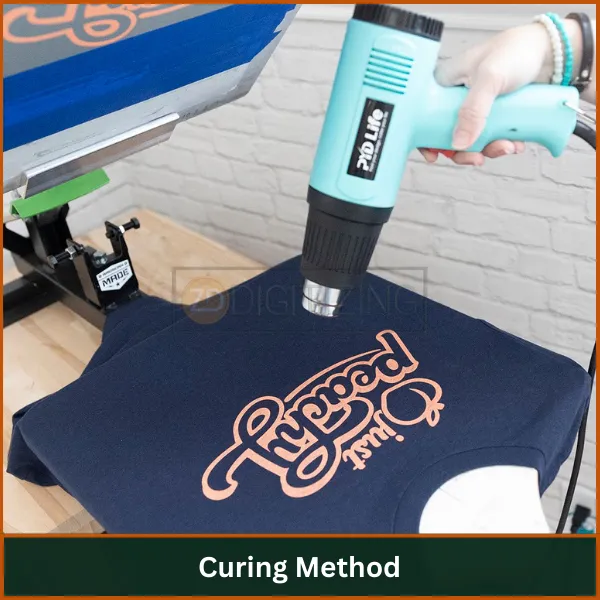
The curing method available can determine the type of screen print ink you should use. If you have UV curing capabilities, UV-curable inks are an option, whereas high-volume shops might prefer the quick-setting nature of plastisol inks.
Environmental and Health Considerations
If you’re looking to create an eco-friendly product, water-based inks might be the best choice. They are generally less harmful to the environment and safer for operators.
Budget Constraints
Some inks are more cost-effective than others. While water-based inks might be cheaper upfront, they might require more layers and thus more labor, potentially increasing the overall cost.
Color and Effect Requirements
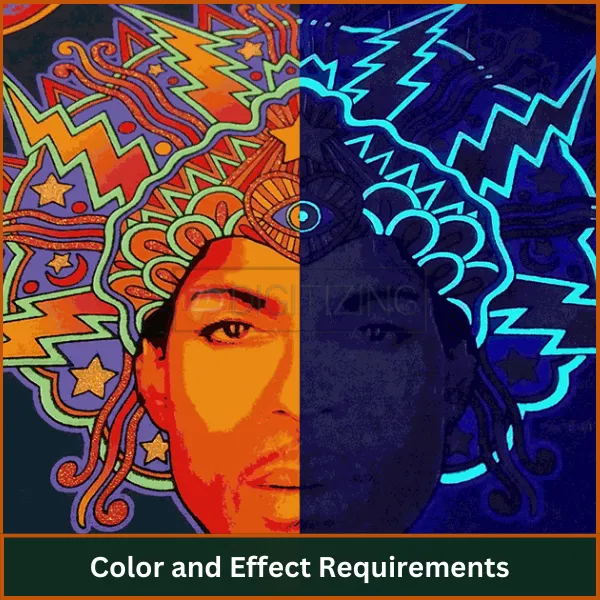
The desired visual effect also plays a role. If you need vibrant colors or special effects like glitter or glow-in-the-dark, certain inks are better suited than others.
Production Volume
High-volume runs might benefit from inks that are quick to cure and easy to work with, such as plastisol, which allows for faster pushing ink screen printer processes without drying in the screen.
Embroidery Digitizing & Vector Art Services

Looking for embroidery digitizing and vector art services that are affordable and reliable? We offer fast turnaround time, guaranteed quality, and the option to preview your design before payment, we make sure you get exactly what you need. Your satisfaction is our top priority, and we’re dedicated to delivering the best results. Don’t wait—try ZDigitizing today and see the difference in quality and service!
Embroidery Digitizing & Vector Art Services
Looking for embroidery digitizing and vector art services that are affordable and reliable? We offer fast turnaround time, guaranteed quality, and the option to preview your design before payment, we make sure you get exactly what you need. Your satisfaction is our top priority, and we’re dedicated to delivering the best results. Don’t wait—try ZDigitizing today and see the difference in quality and service!
Advanced Screen Printing Ink Applications
In the realm of printing, certain advanced applications leverage the unique properties of inks to produce exceptional effects and functionalities. Here are some of the cutting-edge uses:
- Metallic and Glitter Inks: These inks add a sparkling or reflective quality to prints, making them stand out. They are often used for fashion items and promotional products to catch the eye with their shimmering effects.
- Reflective and Glow-in-the-Dark Inks: Used for both safety apparel and novelty items, these inks absorb light and emit it in dark conditions, providing visibility. They are popular in sports gear and children’s clothing.
- 3D and High-Density Inks: Creating a raised texture on the substrate, these inks add a tactile dimension to prints. They are used to enhance the feel and appearance of the design, giving it a three-dimensional look.
- Scented Inks: Infused with fragrances, these inks release a scent when handled. This feature is employed in marketing materials and novelty gifts to engage not only the visual but also the olfactory senses.
- Conductive Inks: These are used in the creation of electronic circuits directly printed onto substrates like fabrics and plastics. They are pivotal in wearable technology and flexible electronics.
- Thermochromic Inks: These inks change color in response to temperature changes. They are used in mood rings, novelty mugs, and promotional items to create dynamic visual effects based on the environment.
Exploring these advanced applications opens up new possibilities for creating interactive, functional, and eye-catching designs that go beyond traditional methods.
Conclusion
And there you have it, a thorough dive into the world of screen printing inks! Whether you choose plastisol for its durability or a UV-curable ink for its fast curing time, the right ink can really make your project stand out. Remember, the ink you choose plays a big part in the final look and feel of your prints.
As you embark on your screen printing journey, consider how our vector art services can enhance your projects even further. We offer fast turnaround times, affordable pricing, and high-quality results.
And the best part? If you’re a first-time customer, you get 50% off! This is a great way to achieve professional-looking prints without breaking the bank.
Thanks for joining us in exploring the vibrant options of screen printing inks. Happy printing!
FAQs
Yes, you can paint with screen printing ink, but it’s designed for screen printing applications and may not perform like traditional paints on various surfaces.
Screen printing ink can be used for block printing, though its viscosity and drying time may differ from typical block printing inks, potentially affecting the print quality.
To clean the ink off a screen printing screen, gently scrape excess ink off, then use a screen wash or emulsion remover designed for screen silk printing inks; rinse thoroughly with water afterward.
Yes, you can layer screen printing ink by applying multiple colors in separate passes, allowing each layer to dry thoroughly before applying the next to prevent colors from bleeding into each other.












